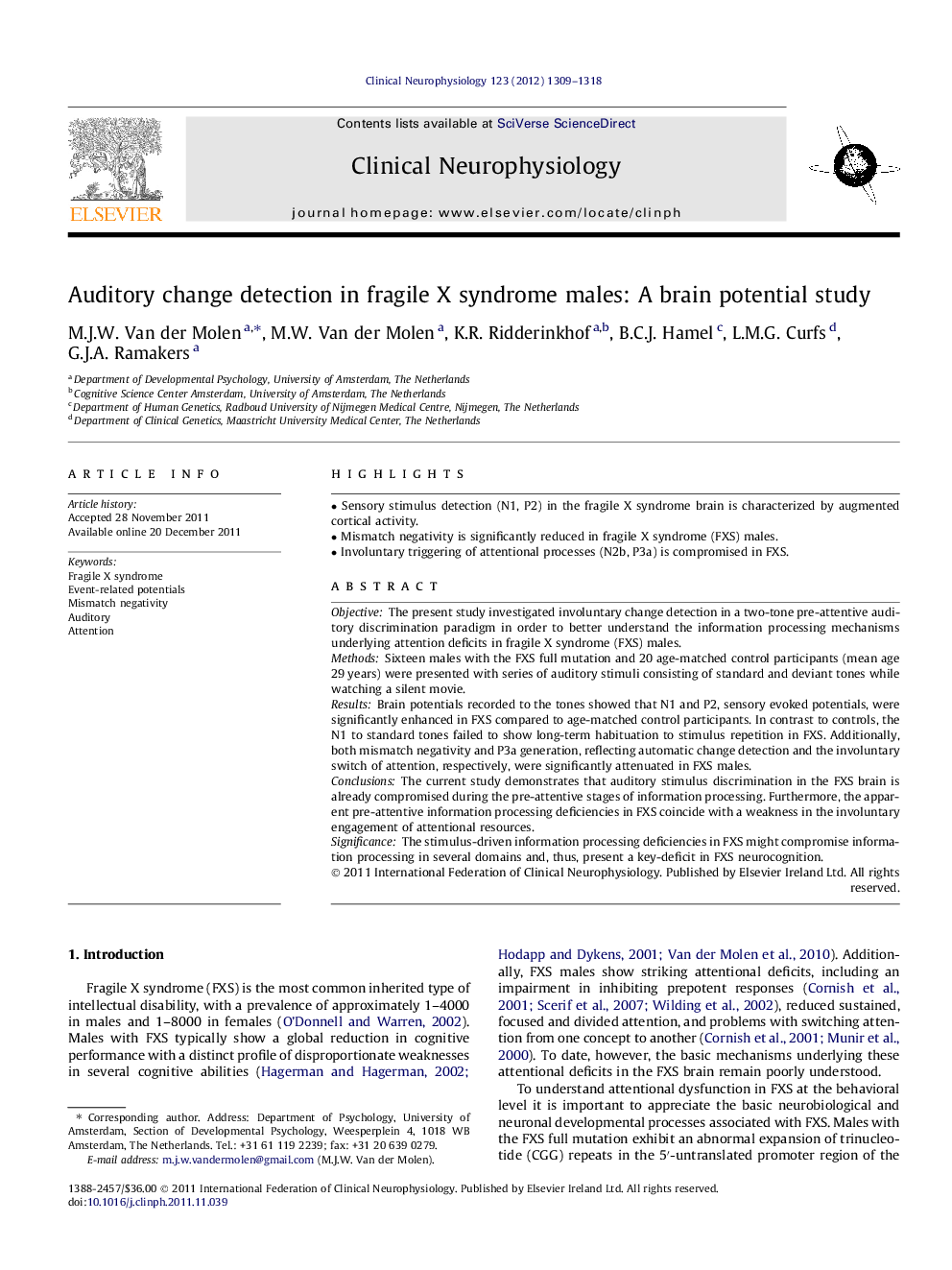| Article ID | Journal | Published Year | Pages | File Type |
|---|---|---|---|---|
| 3045493 | Clinical Neurophysiology | 2012 | 10 Pages |
ObjectiveThe present study investigated involuntary change detection in a two-tone pre-attentive auditory discrimination paradigm in order to better understand the information processing mechanisms underlying attention deficits in fragile X syndrome (FXS) males.MethodsSixteen males with the FXS full mutation and 20 age-matched control participants (mean age 29 years) were presented with series of auditory stimuli consisting of standard and deviant tones while watching a silent movie.ResultsBrain potentials recorded to the tones showed that N1 and P2, sensory evoked potentials, were significantly enhanced in FXS compared to age-matched control participants. In contrast to controls, the N1 to standard tones failed to show long-term habituation to stimulus repetition in FXS. Additionally, both mismatch negativity and P3a generation, reflecting automatic change detection and the involuntary switch of attention, respectively, were significantly attenuated in FXS males.ConclusionsThe current study demonstrates that auditory stimulus discrimination in the FXS brain is already compromised during the pre-attentive stages of information processing. Furthermore, the apparent pre-attentive information processing deficiencies in FXS coincide with a weakness in the involuntary engagement of attentional resources.SignificanceThe stimulus-driven information processing deficiencies in FXS might compromise information processing in several domains and, thus, present a key-deficit in FXS neurocognition.
► Sensory stimulus detection (N1, P2) in the fragile X syndrome brain is characterized by augmented cortical activity. ► Mismatch negativity is significantly reduced in fragile X syndrome (FXS) males. ► Involuntary triggering of attentional processes (N2b, P3a) is compromised in FXS.
